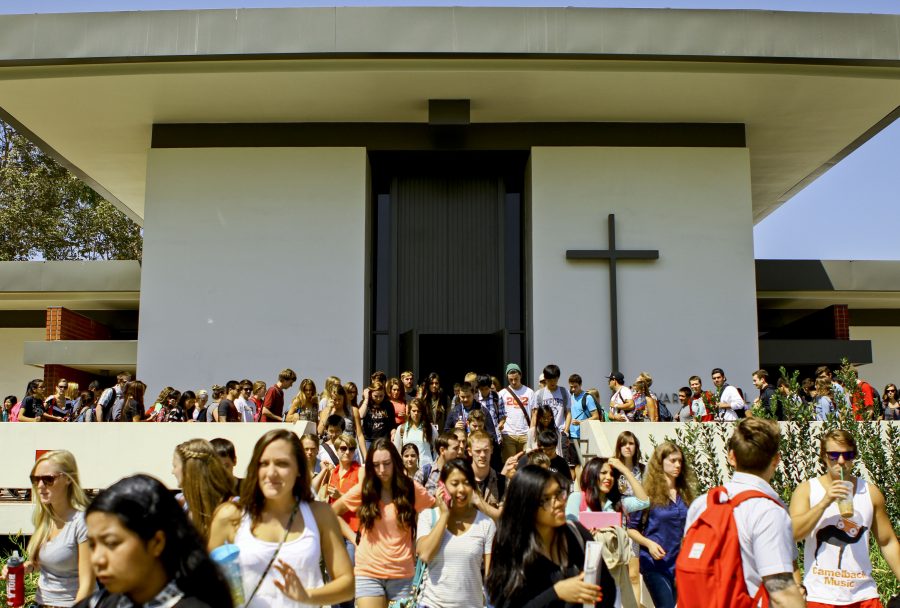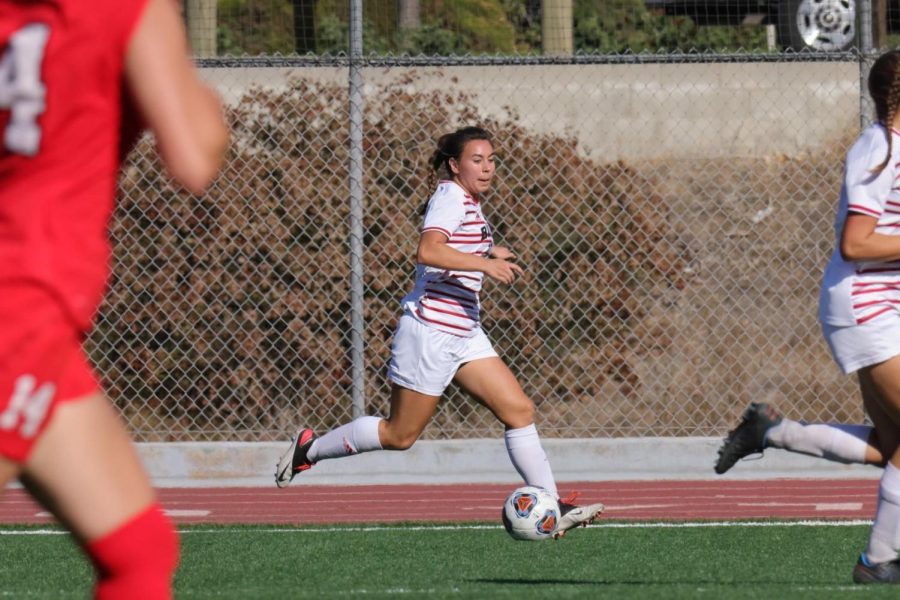Art in a Postsecular Age, the topic of the annual Center for Christianity, Culture and the Arts Symposium, hosted elite speakers from universities and art galleries across the nation to speak on post-secularity and art on March 4.
Stuart Krimko is a poet who has published three poetry books called Not That Light, the Sweetness of Herbert and Hymns and Essays. He was once the co-director of David Kordansky Gallery in Los Angeles.
In what ways do you believe art and religion are married?
“Art has an inherently spiritual or religious root, and it arose as a form of human expression for… spiritual reasons — if you look at it as an anthropological phenomenon… They’re at least intimately married in my view.”
How often would you say theology is incorporated into art today?
“It’s hard to say. Probably not that often… For me personally: often. There seems to be a need to talk around it sometimes for a variety of reasons.”
Why do you care about the topic that was discussed today?
“I’ve noticed with my own work as a poet that theological concerns just come up of their own will almost in the kinds of things I’m referencing or the stories that come to mind. While my own poetic work might not be intimately or directly related to this stuff that I’m doing in the art world, it certainly fuels who I am as an aesthetic person. So making those connections is really important to me. I was glad to be here, and I have to say I learned a lot about the academic field that’s dealing with these issues. I didn’t know there was such a rich discourse going on with precisely these terms, so it’s just really great to be here.”
Why do you care about art?
“Whoa, big question. I don’t know. Because it moves me emotionally. Because I find it beautiful. Because it continues to compel me. It’s mysterious because there is something spiritual about it, and it is a form of spiritual expression, even if it’s not directly.”
_____________________________________________________________________________
Lori Branch works as an associate professor of Restoration and Eighteenth-Century English Literature at the University of Iowa, and she has published multiple works on the postsecular in religion and literature.
In what ways do you believe art and religion are married?
“Well, because I’m a Christian, I think that art reflects the way that human beings are made in God’s image. So, God is a creator and endlessly loving, and human beings have this in themselves. They kind of can’t help it, but they need to be doing. They need to be making. They need to be really loving something, being passionate about it. It’s satisfying to us. We’re made in the image of a creator and we want to create things too.”
How often would you say theology is incorporated into art today?
“In contemporary literature, we can say that we see a lot of existential and religious and spiritual concerns. One of the main markers of that is the work of Marilynne Robinson, the Pulitzer Prize winning novelist who wrote “Gilead,” “Home” and “Lila” — all immensely religious novels, which clearly speak to people all around the globe. Even when we see some of our more agnostic and atheist writers… we still see all of these religious themes and images and concerns… We see religion in contemporary fiction, especially.”
Why do you care about the topic that was discussed today?
“I care about the idea of the postsecular because I’m interested in using the idea of the postsecular to break down the barriers that people in academia have between religious thinking and secular thinking. A lot of times, critical academic thought wants to keep the religious at arm’s distance and wants to think that it’s something primitive or outdated, insufficiently critical. And I think that postsecular thinking can see that’s not quite right. We really can’t quite ever get rid of belief. Belief is inherent in the nature of language and in the ways we relate to each other, and so human nature is, in some sense, religious. What it is to be human is to be spiritual or religious in some sense, and I want to work toward a scholarly discourse that reflects that, in which religion and spirituality are accepted to be part of the human condition.”
Why do you care about art?
“Oh, I just love it. I mean, when you look at a work of art or you listen to a great piece of music, really it’s literature and music for me, and I’m less well versed in visual arts, one just loves it. We were made to love and enjoy things. You think someone else’s thought with them. You feel someone else’s feeling with them when you hear their music, when you read their novel… It’s an experience of communion. Communion doesn’t mean you become exactly like the person you’re with. It means you exist with them, right? I’m still me. You’re still you. I’m reading your novel and I’m sharing something from your mind, and that’s something beautiful. We really have a meeting in that. I love the work of art. I love beauty. I love the experience of being with or alongside another person that literature or a great piece of art gives us.”
___________________________________________________________________________
Matthew Milliner serves as an associate professor of art history at Wheaton College, and he once worked as a member of the Curatorial Advisory Board of the United States Senate.
In what ways do you believe art and religion are married?
“They’re amicably separated right now and they’re contemplating getting back together and sharing perhaps a room every other week…[laughs]. They went through a nasty divorce, and they’re thinking about maybe patching things up with an innocent date every other Friday. They were once closely married, and we’re trying to get them back together. We’re like the kids saying, ‘Mom and Dad, don’t get divorced’ [laughs].”
How often would you say theology is incorporated into art today?
“More and more. When I first came here, I didn’t realized we were surrounded by mountains. Then I came on another trip, and the weather had cleared. The mountains are always there even if an idiot traveler to L.A. doesn’t realize that. They’re always there. Religion has always been present in the art world… So that analogy I’m trying to milk is that it’s not just that religion is finally showing up. We’re finally paying attention to it because you had decades and decades of people who had this beaten out of them, and I mean beaten out of them. Do not underestimate the gift that you have to the wider world. I would want Biola students to be amazed at the quality of the people they got in this room for this event. You had the handful of people who are writing the best stuff here today. It’s amazing, and I’m not one of them. I just got to come along for the ride.”
Why do you care about the topic that was discussed today?
“Because I am a Christian and I don’t want to have to go in the closet to be an art historian. I don’t want to suppress who I am to do my work, and the artwork is open to all kinds of new identities, why should my being a serious evangelical Christian who believes in the resurrection of the body… preclude me from participation? Why should I have to check that at the door? I don’t think I should because it would make me a worse art historian, so that’s why I’m interested in this. I want the freedom to be who I am so I can contribute to the public project of the history of art.”
Why do you care about art?
“Because we are made in the image of an image-making God. We make images. Art is constituent of who we are as creators, made in the image of God. It is the earliest evidence of our uniqueness, long before writing. The cave paintings testify to that. So if you are interested in what it means to be human, of course you’re interested in art… I don’t see how I could not be interested in art and be a Christian. We’re allowed to discuss things that wouldn’t be permissible at Yale University. Isn’t that wonderful to be a part of something like that?”







